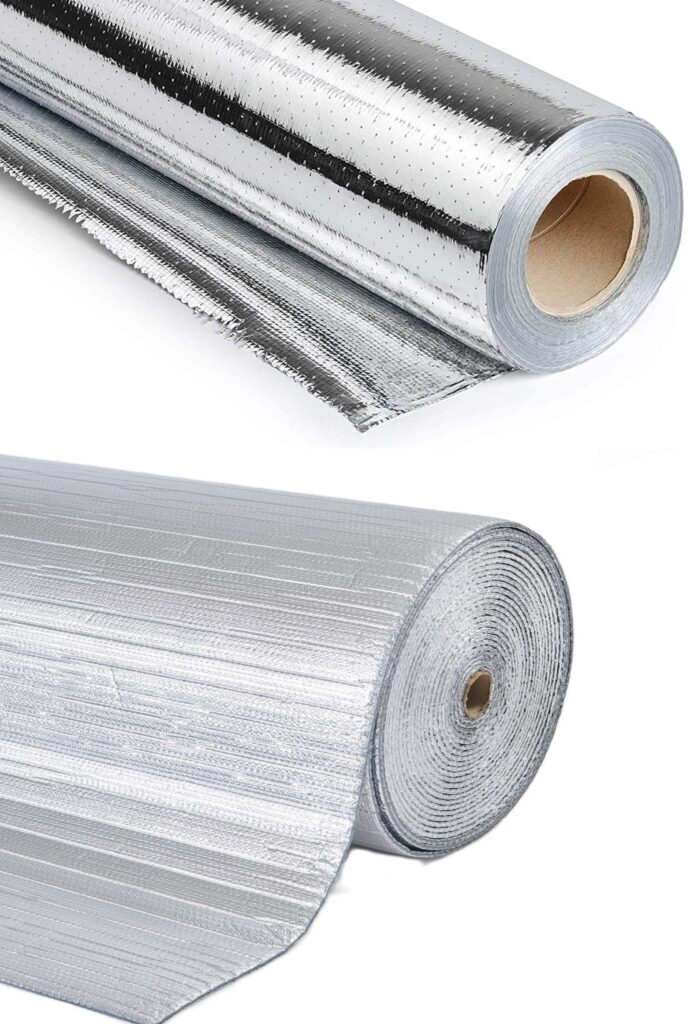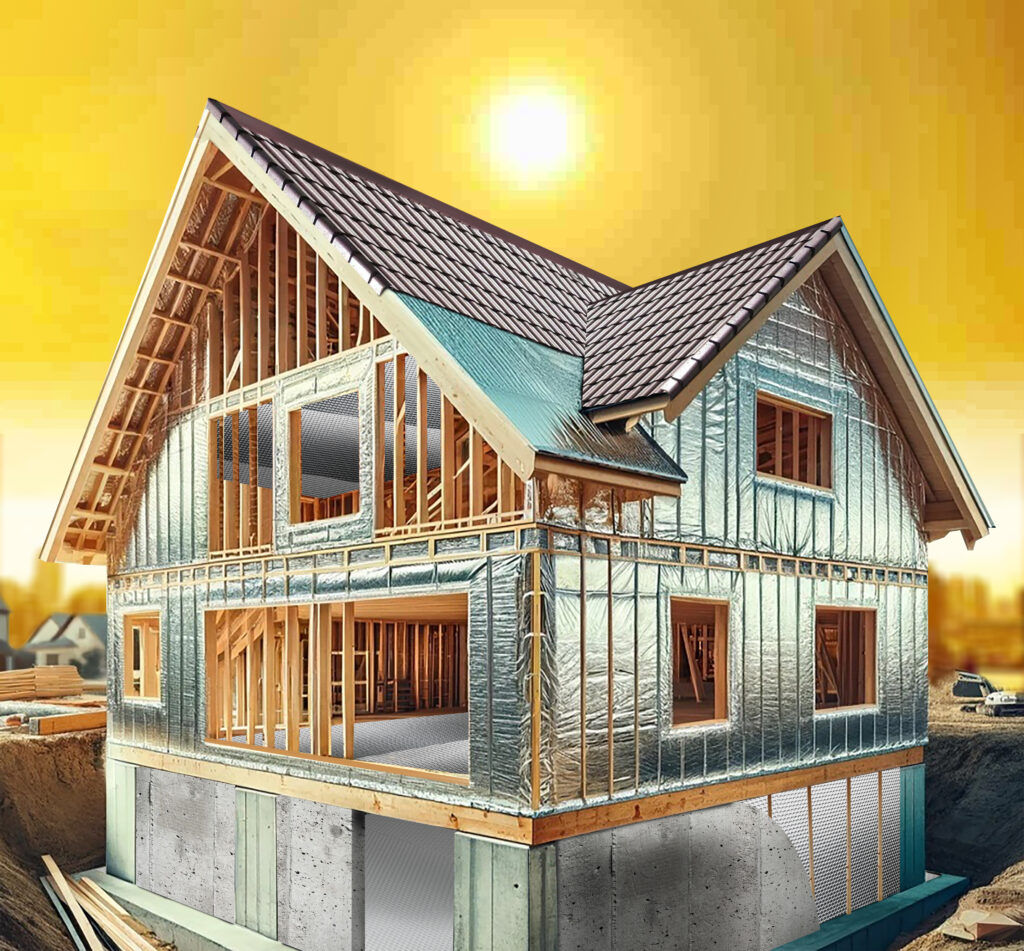
1. Radiant Barriers:
Products Construction: Radiant barriers are typically made from a reflective material such as low E metalized film which is applied to one or both sides of a substrate material like cardboard, plastic film, craft paper, or fabric or woven.
Products Functionality: The primary function of radiant barriers is to reflect radiant heat away from the living space, reducing heat gain in summer and heat loss in winter. They work best when installed in attics, or under the roof where they can reflect the sun’s heat away before it penetrates the home.
Products Efficiency: Radiant barriers are most effective in hot climates or in summer times and are used to keep attic spaces cooler, thereby reducing the load on air conditioning systems and saving energy.
Products Installation: They are generally installed on the underside of the roof or along the rafters to reflect the heat outward.
2. Bubble Foil (Reflective Insulation):
Product Construction: Bubble foil insulation consists of a layer of polyethylene bubbles sandwiched between one or two layers of low-E metalized or aluminum foil. The bubbles can vary in size and are designed to provide an additional insulating air space between the layers, as well as adding some bulk and rigidity to the foil.
Product Functionality:Bubble foil not only reflects radiant heat but also offers some conduction and convection heat resistance due to the air trapped in the bubbles. This makes it more versatile in terms of thermal insulation properties.
Product Efficiency: While bubble foil can be used effectively in both hot and cold climates, it provides a better insulation R-value compared to radiant barriers alone, due to the presence of air pockets.
Product Installation: Bubble foil is often used in a variety of places including walls, roofs, attics, and crawl spaces, and can be used alone or combined with other types of insulation to increase overall thermal resistance.
Summary:
The choice between radiant barriers and bubble foil depends on the specific requirements of the building, the climate, and the intended use. Radiant barriers are more specialized for reflecting heat and are most beneficial in reducing cooling costs in warm climates and summer times, whereas bubble foil offers a broader range of insulation properties, making it suitable for a variety of applications where both heat reflection and resistance to heat flow are needed.

